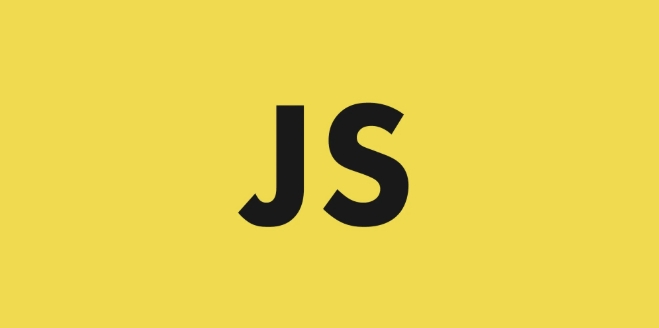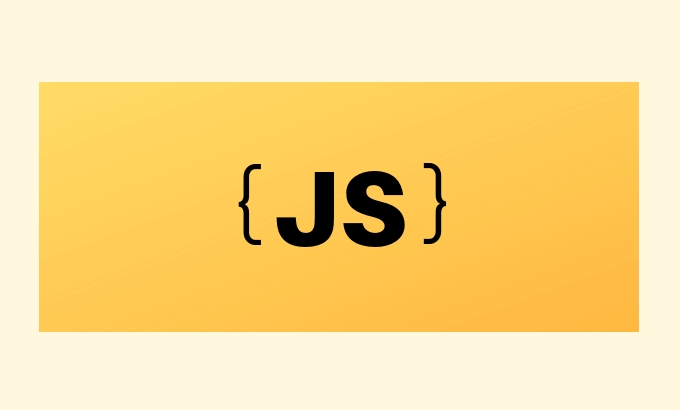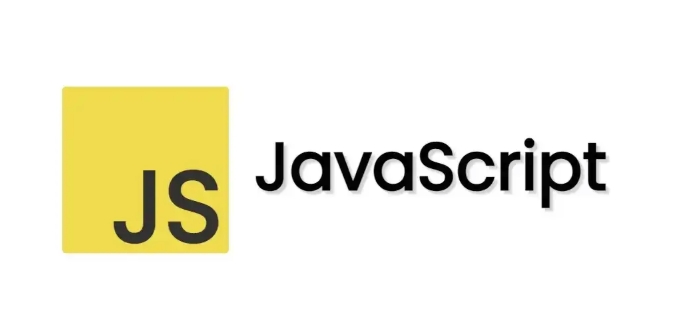 Web Front-end
Web Front-end
 JS Tutorial
JS Tutorial
 Debouncing and Throttling Functions for Performance Optimization in JavaScript
Debouncing and Throttling Functions for Performance Optimization in JavaScript
Debouncing and Throttling Functions for Performance Optimization in JavaScript
Jul 06, 2025 am 12:43 AMDebounce and throttle are two technologies in JavaScript that optimize the execution frequency of high-frequency events. 1. The core of Debounce is that it only executes the last time after multiple triggers, which is suitable for scenes where input box search, window adjustment, etc. that need to wait for stop operation; 2. The core of Throttle is that it only executes it once within a fixed time interval, which is suitable for scenes where scroll monitoring, mouse movement and other scenarios that need to limit the frequency of execution. The difference between the two is the triggering timing and applicable situation: debounce is executed after waiting for the triggering to stop, and throttle is executed periodically. When using it, you need to pay attention to the functions of context binding, parameter passing and optional immediate execution, and can be implemented with the help of the Lodash library.

In JavaScript development, when handling high-frequency events (such as scrolling, adjusting window size, input box input, etc.), if not controlled, it is easy to cause performance problems. Debounce and throttle are two commonly used technical means to optimize the frequency of function execution in these scenarios and improve performance.

What is Debounce?
The core idea of ??Debounce is: in a series of continuous triggers, the function will be truly executed only after a certain period of time after the last trigger, and it will not be triggered again . It is suitable for scenarios where "waiting for the user to stop the operation before executing".

Common uses include:
- Enter the box to search for suggestions (prevent frequent requests)
- Window resize event
- Form Verification
For example, you are typing a search term and sending a request every time you type a word, which is obviously very inefficient. After wrapping with debounce, you can set the request to be sent only after the user stops typing for 300ms.

The implementation method is as follows:
function debounce(fn, delay) {
let timer;
return (...args) => {
clearTimeout(timer);
timer = setTimeout(() => fn.apply(this, args), delay);
};
}Example of usage:
const searchInput = document.getElementById('search');
searchInput.addEventListener('input', debounce((e) => {
console.log('Searching for:', e.target.value);
}, 300));What is Throttle?
The logic of Throttle is to ensure that the function is executed only once within a specified time interval, no matter how many times it is triggered during this time . It is suitable for "limiting frequency of execution".
Typical application scenarios are:
- Scroll event listening (such as infinite scrolling loading)
- Mousemove
- Key control in the game
For example, when the page is scrolled, it will consume a lot of resources if the detection is performed every time the page is scrolled. Use throttle to control it, for example, performing it every 200ms can significantly reduce the calculation pressure.
The simple implementation is as follows:
function throttle(fn, delay) {
let lastCall = 0;
return (...args) => {
const now = new Date().getTime();
if (now - lastCall >= delay) {
fn.apply(this, args);
lastCall = now;
}
};
}Example of usage:
window.addEventListener('scroll', throttle(() => {
console.log('Scrolling...');
}, 200));The difference and choice between Debounce and Throttle
| characteristic | Debounce | Throttle |
|---|---|---|
| Trigger timing | Delayed execution after the last trigger | Execute once within a fixed time interval |
| Applicable scenarios | User input, window changes | Scroll, mouse movement, game control |
| Continuous trigger effect | Only last execution | Execute every once in a while |
When choosing, you can understand it like this:
- If you want to wait for the user to "do something" before responding, choose debounce
- If you want to "check status every once in a while", choose throttle
Small details need attention
-
thispointing problem: When using debounce/throttle wrapper function in event listener, pay attention to the binding context. - Parameter passing: Use
apply()orcall()to preserve the original parameters. - Initial Trigger: Some implementations support the "Execute First Time" option, which can be extended as needed.
- User library: Lodash has provided mature debounce and throttle implementations, which can be directly introduced and used.
Basically that's it. Although these two techniques are not complicated, they are very practical in actual development, and can play a key role in performance-sensitive scenarios.
The above is the detailed content of Debouncing and Throttling Functions for Performance Optimization in JavaScript. For more information, please follow other related articles on the PHP Chinese website!

Hot AI Tools

Undress AI Tool
Undress images for free

Undresser.AI Undress
AI-powered app for creating realistic nude photos

AI Clothes Remover
Online AI tool for removing clothes from photos.

Clothoff.io
AI clothes remover

Video Face Swap
Swap faces in any video effortlessly with our completely free AI face swap tool!

Hot Article

Hot Tools

Notepad++7.3.1
Easy-to-use and free code editor

SublimeText3 Chinese version
Chinese version, very easy to use

Zend Studio 13.0.1
Powerful PHP integrated development environment

Dreamweaver CS6
Visual web development tools

SublimeText3 Mac version
God-level code editing software (SublimeText3)

Hot Topics
 Performance optimization and horizontal expansion technology of Go framework?
Jun 03, 2024 pm 07:27 PM
Performance optimization and horizontal expansion technology of Go framework?
Jun 03, 2024 pm 07:27 PM
In order to improve the performance of Go applications, we can take the following optimization measures: Caching: Use caching to reduce the number of accesses to the underlying storage and improve performance. Concurrency: Use goroutines and channels to execute lengthy tasks in parallel. Memory Management: Manually manage memory (using the unsafe package) to further optimize performance. To scale out an application we can implement the following techniques: Horizontal Scaling (Horizontal Scaling): Deploying application instances on multiple servers or nodes. Load balancing: Use a load balancer to distribute requests to multiple application instances. Data sharding: Distribute large data sets across multiple databases or storage nodes to improve query performance and scalability.
 Nginx Performance Tuning: Optimizing for Speed and Low Latency
Apr 05, 2025 am 12:08 AM
Nginx Performance Tuning: Optimizing for Speed and Low Latency
Apr 05, 2025 am 12:08 AM
Nginx performance tuning can be achieved by adjusting the number of worker processes, connection pool size, enabling Gzip compression and HTTP/2 protocols, and using cache and load balancing. 1. Adjust the number of worker processes and connection pool size: worker_processesauto; events{worker_connections1024;}. 2. Enable Gzip compression and HTTP/2 protocol: http{gzipon;server{listen443sslhttp2;}}. 3. Use cache optimization: http{proxy_cache_path/path/to/cachelevels=1:2k
 How to quickly diagnose PHP performance issues
Jun 03, 2024 am 10:56 AM
How to quickly diagnose PHP performance issues
Jun 03, 2024 am 10:56 AM
Effective techniques for quickly diagnosing PHP performance issues include using Xdebug to obtain performance data and then analyzing the Cachegrind output. Use Blackfire to view request traces and generate performance reports. Examine database queries to identify inefficient queries. Analyze memory usage, view memory allocations and peak usage.
 The impact of exception handling on Java framework performance optimization
Jun 03, 2024 pm 06:34 PM
The impact of exception handling on Java framework performance optimization
Jun 03, 2024 pm 06:34 PM
Exception handling affects Java framework performance because when an exception occurs, execution is paused and the exception logic is processed. Tips for optimizing exception handling include: caching exception messages using specific exception types using suppressed exceptions to avoid excessive exception handling
 Apache Performance Tuning: Optimizing Speed & Efficiency
Apr 04, 2025 am 12:11 AM
Apache Performance Tuning: Optimizing Speed & Efficiency
Apr 04, 2025 am 12:11 AM
Methods to improve Apache performance include: 1. Adjust KeepAlive settings, 2. Optimize multi-process/thread parameters, 3. Use mod_deflate for compression, 4. Implement cache and load balancing, 5. Optimize logging. Through these strategies, the response speed and concurrent processing capabilities of Apache servers can be significantly improved.
 Performance optimization in Java microservice architecture
Jun 04, 2024 pm 12:43 PM
Performance optimization in Java microservice architecture
Jun 04, 2024 pm 12:43 PM
Performance optimization for Java microservices architecture includes the following techniques: Use JVM tuning tools to identify and adjust performance bottlenecks. Optimize the garbage collector and select and configure a GC strategy that matches your application's needs. Use a caching service such as Memcached or Redis to improve response times and reduce database load. Employ asynchronous programming to improve concurrency and responsiveness. Split microservices, breaking large monolithic applications into smaller services to improve scalability and performance.
 Questions and Answers on PHP Performance Optimization Architecture Design
Jun 03, 2024 pm 07:15 PM
Questions and Answers on PHP Performance Optimization Architecture Design
Jun 03, 2024 pm 07:15 PM
In order to improve the performance of concurrent, high-traffic PHP applications, it is crucial to implement the following architectural optimizations: 1. Optimize PHP configuration and enable caching; 2. Use frameworks such as Laravel; 3. Optimize code to avoid nested loops; 4. Optimize database, Build index; 5. Use CDN to cache static resources; 6. Monitor and analyze performance, and take measures to solve bottlenecks. For example, website user registration optimization successfully handled a surge in user registrations by fragmenting data tables and enabling caching.
 PHP framework performance optimization: Exploration combined with cloud native architecture
Jun 04, 2024 pm 04:11 PM
PHP framework performance optimization: Exploration combined with cloud native architecture
Jun 04, 2024 pm 04:11 PM
PHP Framework Performance Optimization: Embracing Cloud-Native Architecture In today’s fast-paced digital world, application performance is crucial. For applications built using PHP frameworks, optimizing performance to provide a seamless user experience is crucial. This article will explore strategies to optimize PHP framework performance by combining cloud-native architecture. Advantages of Cloud Native Architecture Cloud native architecture provides some advantages that can significantly improve the performance of PHP framework applications: Scalability: Cloud native applications can be easily scaled to meet changing load requirements, ensuring that peak periods do not occur bottleneck. Elasticity: The inherent elasticity of cloud services allows applications to recover quickly from failures and maintain availability and responsiveness. Agility: Cloud-native architecture supports continuous integration and continuous delivery





